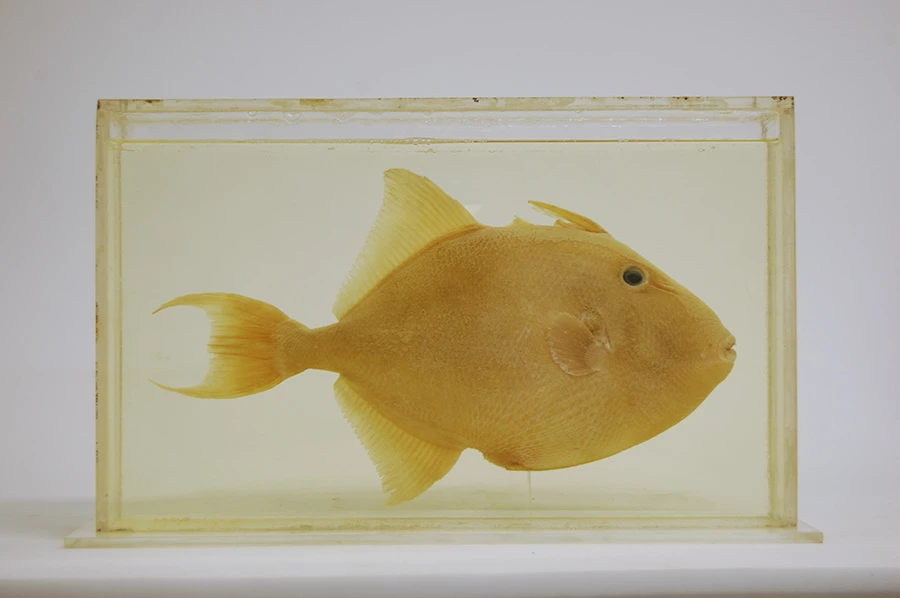Fish! Conserving fluid preserved specimens for display
, 20 October 2010
For October and November 2010 we have opened a small exhibition in our main hall celebrating the diversity of fish found around the UK. These fish are all from our collections, with the oldest specimens going back to 1904.
To get these specimens usable for display we have had to do some conservation work. This has been as simple as cleaning the glass jar or Perspex display tank, to working on the specimen itself and changing the preservation fluid. How the fish has been preserved can affect its overall appearance and condition, but unfortunately whatever method we use the colour will be lost.
Many of the fish have been preserved in an alcohol solution, usually ethanol, which does result in shrinkage and the fish becoming very stiff. The preserving fluid can also become a very dark amber colour. This is due to materials such as lipids in the fish tissue being extracted out by the alcohol solution. However we know ethanol based preserving solutions work as the practice has been going on since the 1600’s! In more recent years we have found that it can also preserve DNA that is usable in modern molecular studies.
Another common preservative is formaldehyde, commonly called formalin. A diluted solution, usually of around 4% formaldehyde, has been used for over a century now. Formaldehyde causes chemical cross linking reactions in the biological tissues and this is termed ‘fixation’. Unfortunately formaldehyde does have problems, being pungent and potentially toxic to work with.
Some of the fish have also been preserved in a fluid called ‘Steedmans’. This is a mixture of propylene glycol (often used in anti freeze), a phenol (an aromatic organic chemical) and formaldehyde. This can preserve fish shape very well but there are concerns over its long term preservation properties.
For the main hall display all the preserving fluids were checked. All the specimens in formaldehyde and ‘Steedmans’ were moved to a safer alternative. This uses a chemical called DMDM Hydantoin which replaces the use of formaldehyde in everyday products such as shampoos and cosmetics and is much safer to work with.
Some of the specimens themselves needed some cleaning and tidying up. After years in a jar many had a build up of old proteins and fats on their surface. Other specimens had corrosion products on them from old metal tags that had been used for labels. Many of the specimens were also moved to more suitable glass jars.
The end result is an intriguing display highlighting specimens with fishy stories from the museums collections. The aim has been to make the specimens as accessible as possible so that visitors can get a close look at the preserved fish. The exhibition also represents the ongoing work that is required to care for the museums natural history collections for both now and the future.
Julian Carter




Comments - (2)
Hi Kerryn,
Many thanks for your message, I am so excited that our blog is being read all the way over in New South Wales!
The glass jar that you enquired about is made of boro-silicate glass, which we order under the catchy title ‘Museum jar with stoppered lids’ from a UK-based company called Dixon Glass. They come in a wide range of sizes so have lots of flexibility.
Best wishes
Jen
Question, the image of the bonito (Sarda sarda) in the tall glass jar - WHAT is the name of the glass jar? Like if I wanted to go a googlin' to find that sort of jar on the internet, what would i call it? Does it have a specific name or just 'long tall glass jar' ?
Many thanks in advance:)
Kerryn Wood
Sapphire Coast Marine Discovery Centre
Eden, NSW, Australia